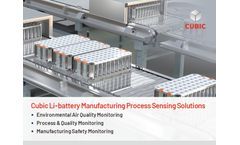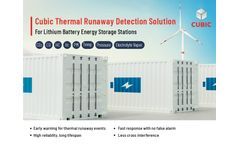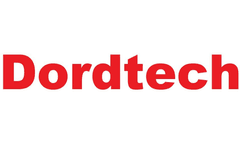Refine by
Vaporizer Articles & Analysis
221 articles found
High-temperature combustion chambers convert hydrocarbons into carbon dioxide and water vapor, drastically reducing odorous emissions. Simultaneously, condensation units recover condensable byproducts, such as bio-oil, which can be repurposed as fuel or chemical feedstock. ...
Improved Air Quality and Emission Control Equipped with advanced gas treatment systems, modern palm shell charcoal machines capture and neutralize airborne pollutants such as tar, acidic vapors, and particulate matter. These emissions, if left uncontrolled in traditional burning methods, contribute to respiratory issues and ecological degradation. ...
However, NMP is highly volatile and flammable, posing significant safety risks. Continuous monitoring of NMP vapor concentration is necessary to avoid fire or toxicity hazards. In the cell assembly stage, electrolyte leakage is a critical risk, especially when the electrolyte is corrosive and volatile. ...
Basically everyone is familiar with the three most famous states of matter: solid, liquid, and gas. However plasma the fourth state of matter is unfamiliar to most people. When asked what plasma is most people think about the plasma in blood which is the liquid that transports nutrients throughout the human body. Less people will think about the plasma that is generated in the northern- and ...
Vaporized Hydrogen Peroxide (VHP) is recognized as a highly effective sterilizing agent, widely utilized for disinfecting surfaces and equipment in cleanroom environments. ...
First and foremost, hydrogen is a clean fuel that produces only water vapor when burned, making it an environmentally friendly option compared to traditional fossil fuels. ...
ByMacroad
This component is responsible for the efficient cooling of gases into liquids and often involves a series of condensers that convert the vapor back into liquid form. Gas Cleaning and Treatment System: The pyrolysis process generates gases such as syngas, which may contain harmful impurities. ...
During pyrolysis, the volatile components of the wood are vaporized, leaving behind carbon-rich charcoal. However, to maximize charcoal quality, several factors need to be optimized in charcoal making equipment. ...
In particular, high-purity sputtering targets are used in the physical vapor deposition (PVD) process for the manufacture of electronic components, and are key materials for the preparation of surface electronic films such as wafers, panels, and solar cells. ...
The laser cutting process involves directing the laser beam at the material to be cut, which causes the material to heat up and melt or vaporize. The laser beam is typically controlled by a computer, which directs the beam along the desired cutting path. ...
As the pyrolysis oil is heated, its components vaporize at different temperatures, allowing for the separation of various fractions. ...
This high energy density makes plastic fuel oil an effective fuel source, suitable for industrial heating, power generation, and even in modified diesel engines. 2.2 Flash Point and Fire Safety The flash point of plastic fuel oil, or the temperature at which it can vaporize to form a combustible mixture in air, is an important safety consideration. ...
The rate of pyrolysis is influenced by reactor design, operating temperature, and the composition of the feedstock.Product Separation and Recovery: As pyrolysis occurs, various byproducts are produced, each requiring separation and cooling. The pyrolyzed oil vapor is condensed into liquid form, while the remaining gas is either collected or recycled to fuel the reactor, and ...
This includes techniques such as chemical vapor deposition, molecular beam epitaxy, and ion implantation, which allow manufacturers to control the deposition of materials with high precision and accuracy. ...
The Discovery and Structure of Fullerene: A Revolution in Carbon Chemistry The discovery of fullerene was a result of groundbreaking experiments using laser vaporization of graphite. The researchers observed the formation of a new carbon molecule with a unique mass-to-charge ratio. ...
ByMatexcel
The fabrication process can be summarized in the following steps: Deposition: Thin films of conductive, insulating, or semiconducting materials are deposited on silicon wafers using physical vapor deposition (PVD), chemical vapor deposition (CVD), or atomic layer deposition (ALD). ...
During a thermal runaway event, the battery releases various gases, such as CO2, H2, CO, and electrolyte vapor. Gas sensors can monitor the concentration changes of these gases in real-time and issue early warnings during the early stages of thermal runaway events, providing ample response time for vehicle owners and management systems to prevent accidents. ...
Considering the safety risks of thermal runaway events in energy storage stations, Cubic, a leading manufacturer of gas sensors and analyzers, has developed thermal runaway monitoring sensors based on its core gas sensor technology to provide real-time monitoring of gases (CO2/CO/HC/H2), electrolyte vapor (DMC/EMC/EC), pressure, particles, and other indicators released in the ...
One common method for synthesizing graphene is chemical vapor deposition (CVD), where a carbon-containing gas is decomposed on a metal substrate to form a graphene film. ...
For our client in Groot-Ammers, a vapor processing installation is supplied that runs on vapor of a petrol distribution station. Instead of having an impact on the environment by just being released into the air, the hazardous vapors are transferred into electrical power, avoiding costs procuring these. ...
ByDordtech















